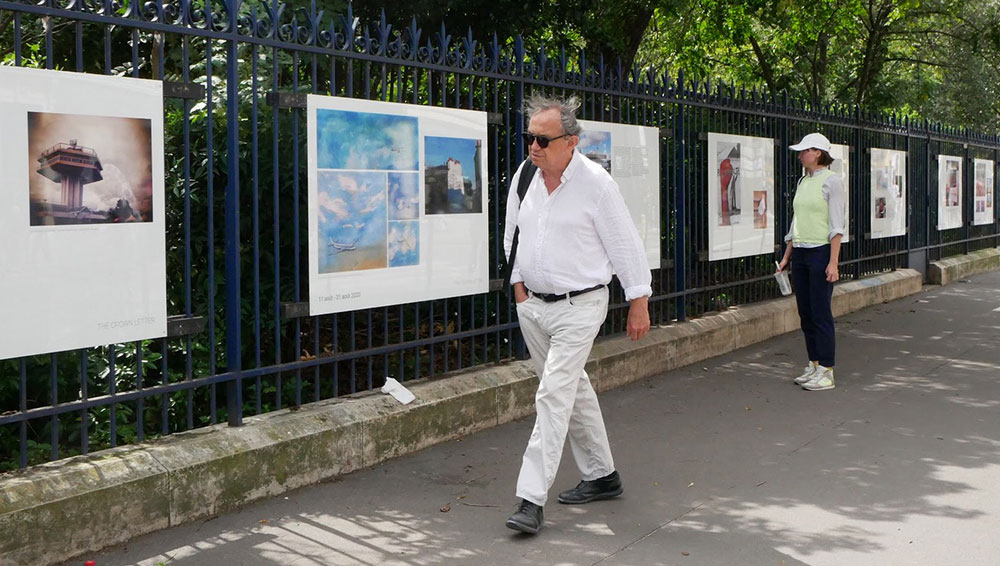
The Crown Letter, Rue de Rivoli, Paris 1. Photo @ Kyoko Kasuya.
by NICOLA HOMER
Since the start of the global pandemic, Studio International has interviewed artists about its impact on their lives. The French artist Natacha Nisic talked about her online participatory art project in an interview in August 2020. Now, The Crown Letter has exhibitions in Paris this month, and it has been selected for the Bienalsur 2021.
Meanwhile, the disruption still looms large, as the pandemic is far from over in many parts of the world, and artists are settling into the new reality of work. This summer, three artists from The Crown Letter spoke to Studio International by Skype from their home countries of Argentina, Germany and India. More than a year since the start of the pandemic, how are artists across the world surviving the storm?
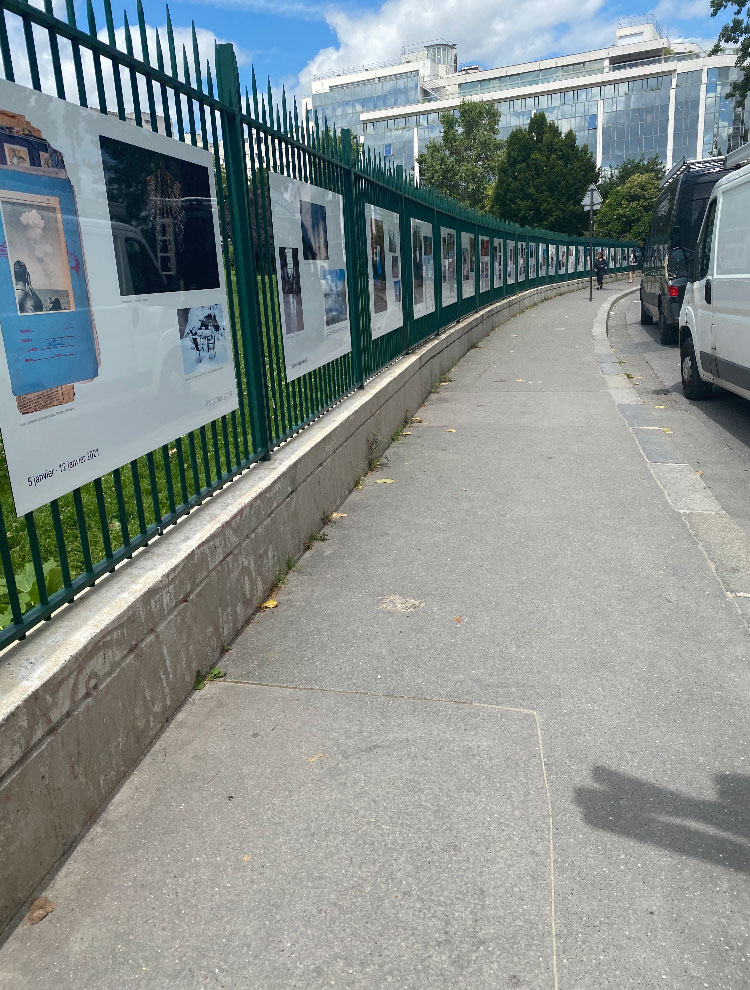
The Crown Letter, Square Villemin, Paris 10. Photo @ Kyoko Kasuya.
Ivana Vollaro, visual artist, Argentina
When the pandemic swept into Argentina in 2020, Ivana Vollaro headed out of the city of Buenos Aires without many belongings, after the sudden loss of her mother, ending up living on the border of Rosario. The artist says: “I came to the countryside without clothes, without anything, only with my computer, my dog and my husband. And the world stopped.”
Like many people in different parts of the world, she listened to the news at the moment when a dangerous virus was travelling across the world. This was a once-in-a-century event. “We looked to Europe or the United States because we were next,” she says. “We watched the news, and we said: ‘Wow, everything will come.’ Brazil every day was worse and worse and worse.”
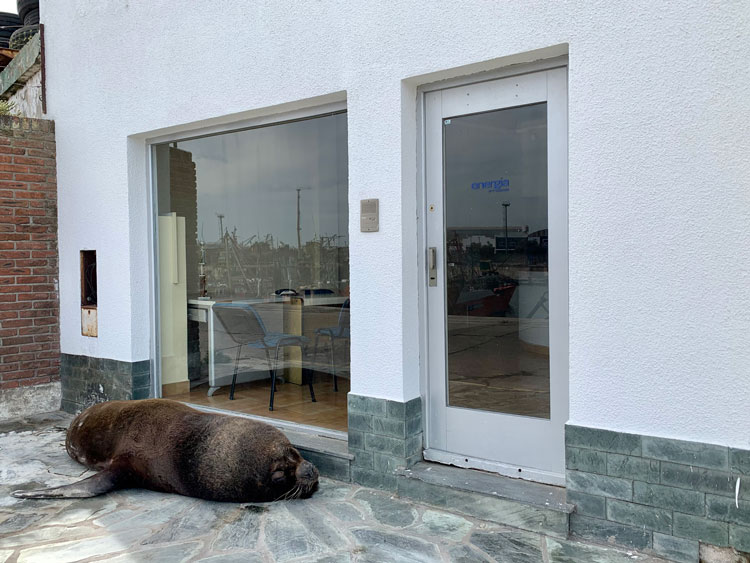
Ivana Vollaro. Still waiting, 2021.
Then the gravity of the situation hit home. At the beginning, says Vollaro, friends would get Covid, then someone in their family, and then someone would end up in hospital. There is a pause, and her voice trails off, as she talks to Studio International via a Skype call. It was like a series of dominoes collapsing, she says.
However, Vollaro was not alone. When the world stopped, she found company among a group of international artists in The Crown Letter, an online participatory art project created by Natacha Nisic. They publish virtual works together and meet at a salon via the video-conferencing tool Zoom. “The project has this freedom, has this kind of liberty,” she says.
Vollaro left behind her studio in Buenos Aires and was unable to go there for seven months. Her practice shifted towards her immediate realm. Vollaro conceptualised the house as a waiting room, and worked with language, sentences from internet research, about the situation when things were cancelled, to frame her own experience. She described an experience that conjured up Samuel Beckett’s play Waiting for Godot.
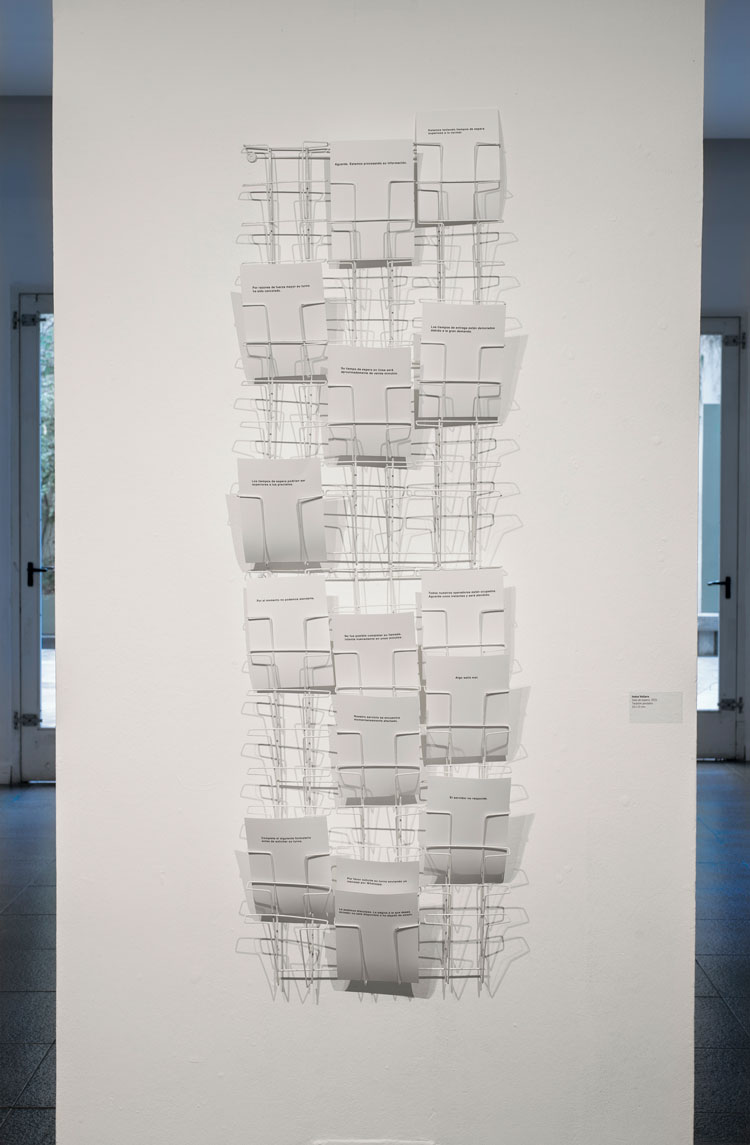
Ivana Vollaro. Waiting room, 2021. Postcards, 15 x 21 cm. Photo: Nacho Iasparra.
The artist made work about the concept of the waiting room for a show at the Casa Nacional del Bicentenario, a cultural centre and museum in Buenos Aires. While they closed their doors and cancelled exhibitions, museums launched initiatives to help artists. One new development was that museums started to pay for artists’ works, virtually. The Buenos Aires Museum of Modern Art paid Vollaro for a video to feature on its website.
During its scheduled run, the exhibition had to close as the country once again became a hotspot for Covid. In May 2021, the country’s president said Argentina was in the worst moment of the pandemic. Like many in the global south, people there faced a long wait for vaccines. “We have the problem of the countries in the third world. All the countries that are not in Europe or the United States have had to wait more,” says Vollaro.
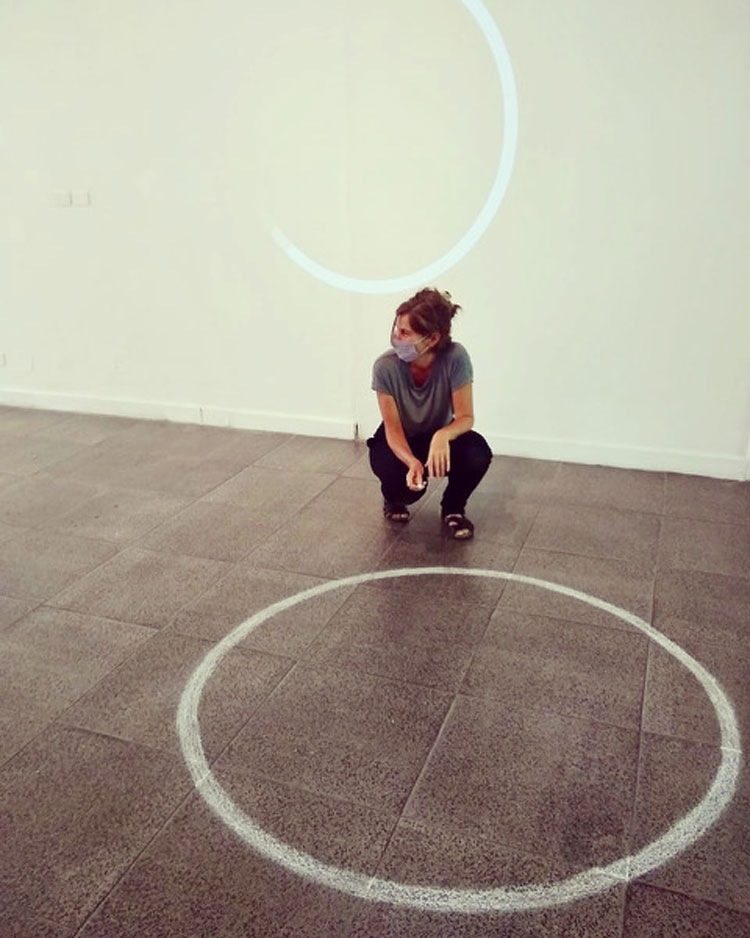
Ivana Vollaro. Single-channel video and chalk on the floor, 2020–2021. Dimensions variable. Photo: Silvia Dolinko.
In the light of summer, Vollaro has weathered the pandemic through making a new life for herself in the countryside, encouraged by the calls of museums. Depending on the season, you can see different kinds of animals, plants and trees, including iguanas. The artist appears to be full of gratitude and looks towards a simple kind of life after the pandemic. “The art and the natural life saved me over here,” she reflects.
Katja Stuke, photographer, Germany
For Katja Stuke, a photographer, exhibition organiser and curator, from Düsseldorf in Germany, the pandemic has taken away the opportunity for international travel, but given her the time to dig into her archives. The photographer found imagery of Konohana in Osaka, where she had discovered an artist community, and created a fresh angle on her work in her studio by asking a young woman to hold a white circle over imagery of the Japanese district. In this mise en scène, you can see the hand of her friend, holding the circle like a fictional moon, layered over a picture of Konohana. Invention was born out of necessity. The artist wished to create new imagery while grounded at home. The image was a starting point for a dialogue between the German photographer and the Japanese poet and photographer Yoshinori Henguchi. Stuke sent photographs to Japan and Henguchi used them for performances and the videos he made of the performances. This creative process culminated in an exhibition last autumn, where the artist’s framed photograph itself and his videos were shown at the Japan Foundation in Cologne.
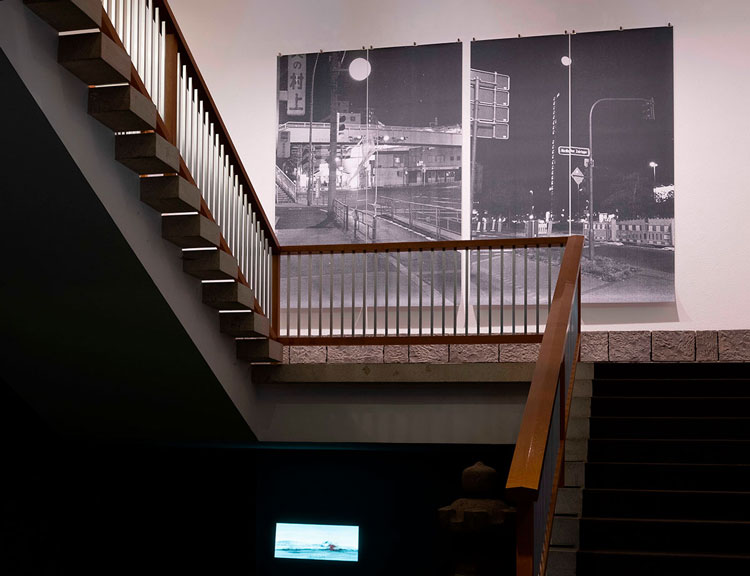
Moon over Konohana, images by Katja Stuke, installation view: Japanisches Kulturinstitut, The Japan Foundation Cologne 2021.
Stuke says: “It’s the first time I did something staged in the studio. And that’s absolutely a result of not being able to travel, and not being able to go back to Japan, and forcing me to maybe continue with this dialogue, and find a way to create new images. That was very nice, and it was also nice to use it for this dialogue with Henguchi.”
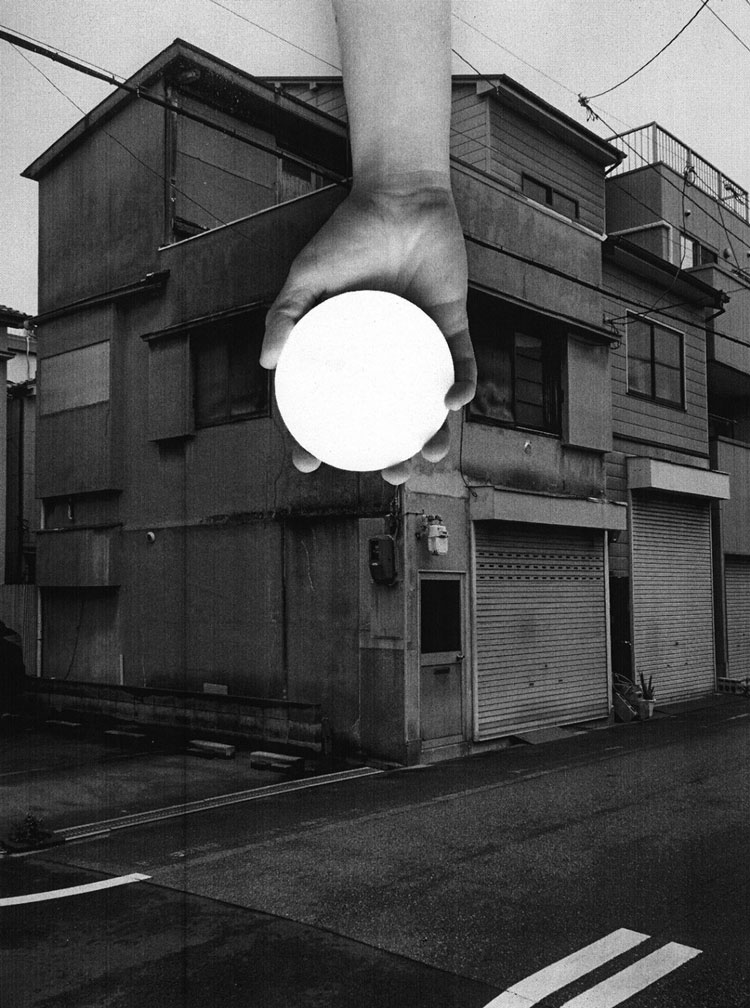
Katja Stuke, New Moon from the series Moon over Konohana, Düsseldorf 2021.
While, historically, Stuke has collaborated on artworks with her partner, Oliver Sieber, in Paris, China and Japan, more recently they have been making connections in virtual spaces, as seen in their collaboration on an online network of cities, Cartographie Dynamique, and a virtual event about photobooks. Stuke says what is happening locally captures events on a global stage. On the one hand, this can be seen positively in the connection between Tokyo and Paris, cities hosting the summer Olympic Games. On the other hand, she observes that, with global trade, each week 50 trains travel from China to Duisburg. There was a sense of connectedness, as the pandemic flashed around the world through international travel. “We didn’t have enough masks because they were produced in China and so you can feel it, especially through the pandemic, it got clearer and clearer how we are all connected, and depending on each other,” says Stuke.
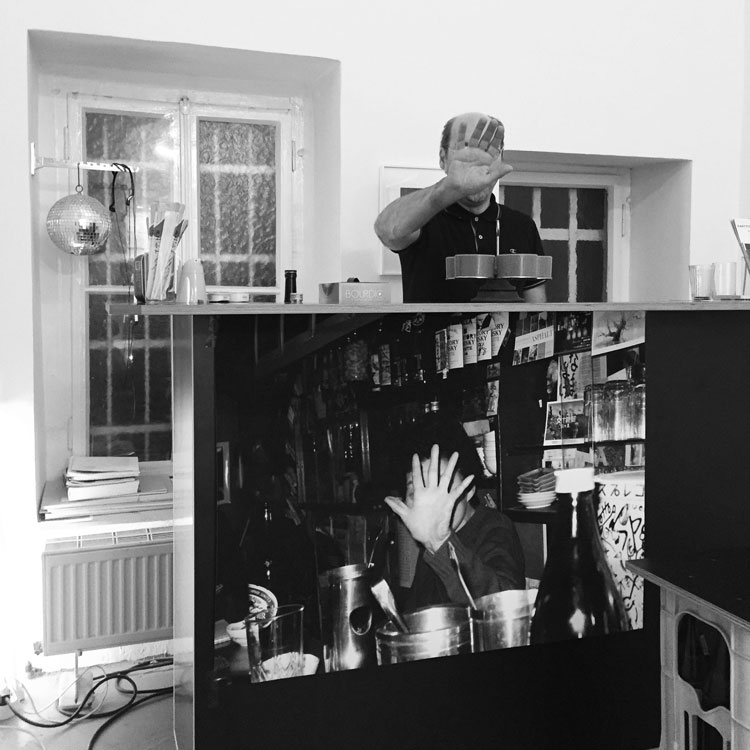
ANT!FOTO Bar @ Katja Stuke & Oliver Sieber, 2019.
Stuke weathered the pandemic with support from the federal state government of North Rhine-Westphalia in Germany. The funding system was designed for artists working across many genres, including performance, music, dance, photography/video and the visual arts. There were 15,000 grants last year and another 15,000 this year. Stuke says she was able to secure funding from her city and a local bank for her initiative, the ANT!FOTO Bar. This is a social event that involves talking about photobooks and drinking Japanese drinks, which Stuke and Sieber have moved into a virtual space, where people can gather with small avatars. This summer, they have launched a mobile bar for the project, to enable people to meet outdoors.

ANT!FOTO Bar, Vitrine, May 2019, Katja Stuke & Oliver Sieber.
The photographer adds that doing art on billboards, as seen in The Reclaim Award in Cologne – a public museum – can help artists to meet new people. “I have the impression that people try to be better connected,” she says. “We also met some other artists who started online projects, or who invited us to participate in online projects, or there were some activities inviting artists to present their work on billboards. There was a lot of activity during the pandemic. I think that was also necessary for most of the artists, to feel that they are still in a network.” Stuke writes in an email: “For me and most of the artists I know, the lockdown was a fruitful time.”
Saviya Lopes, artist, India
For Saviya Lopes, an artist from Mumbai, and a director of the collective the Clark House Initiative, the global pandemic quickly jolted her into reality when it arrived in India at the start of March 2020. “Like everyone, we listened to the news in different spaces. But we didn’t really think of it. We were not prepared that it would hit India so badly and that we would go into a sudden lockdown. That was really unexpected. I think that hit us pretty hard,” she says. “We were always into our own bubbles as artists.”
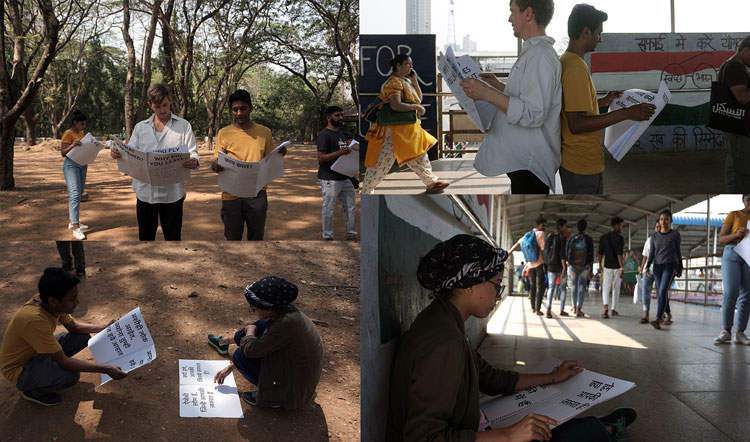
Memorial For the Lost, performed by Hillside projects in collaboration with Clark House Initiative, 2020.
The timing was bad. In early 2020, she was happy to launch the first residency programme of the Clark House Initiative, with the Swedish artist duo Hillside Projects: Emily Berry Mennerdahl and Jonas Böttern. The young director had joined the collective in 2015. However, there was a closure of the space in 2018, followed by a hiatus for the group until its relaunch in 2020. International themes were woven into the tapestry of its exhibitions. Indo-Fijian textile artist Quishile Charan explored indentured labour as she looked at the histories of Indians taken on board ships to Fiji to work in sugar plantations. The Swedish artist duo studied migratory birds, before focusing on the depletion of vultures in India. The birds play an important role in the cycle of nature.
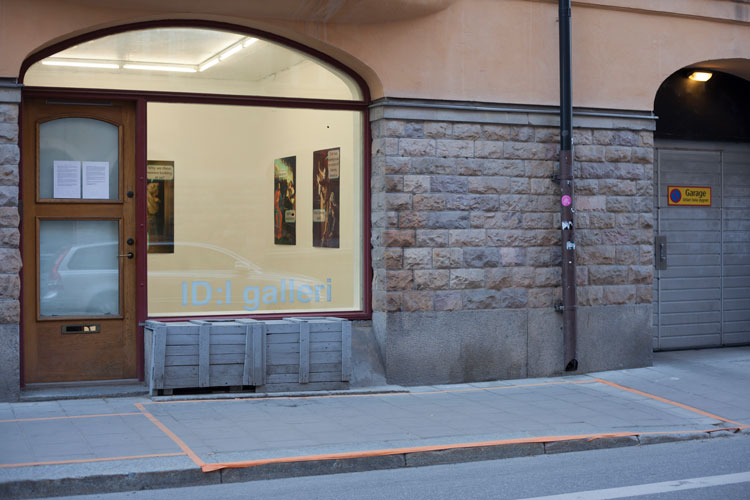
Tasteless, Odourless, Nonetheless,| ID:I Gallerie, Sweden, 2020.
The itinerant group from the Clark House Initiative held public performances at the Borivali Railway Station and the Sanjay Gandhi National Park, Borivali. The artists employed the languages of Swedish, English, Hindi, Marathi and Gujarati for the performances. People came up to them and asked questions. They were looking forward to doing more shows. However, Lopes was forced to take stock of the situation, as she reflected on how she responded to the arrival of the pandemic. While many spaces were adapting to online platforms, she suggested that would be the antithesis of this real-world initiative. “It was always about working with people at ground level, working with communities and interacting with students, with artists, with normal people, with the public,” she says.
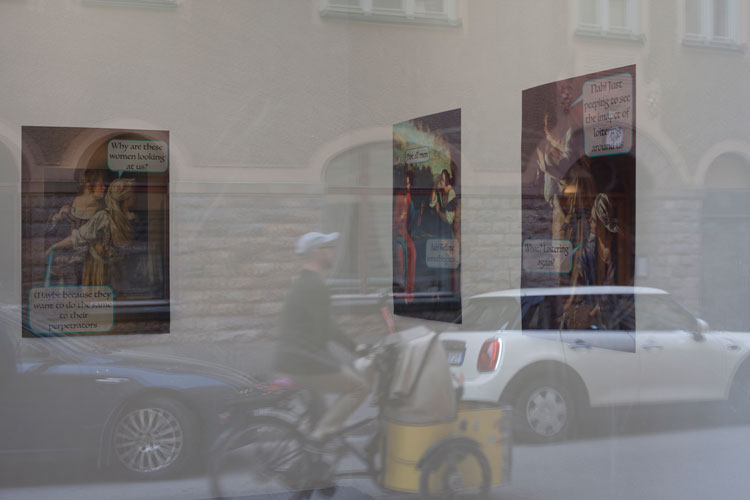
Anno Domini by Saviya Lopes | ID:I Gallerie, Sweden 2020.
However, with very few grants that support artists in India, the future looked uncertain: “There was no kind of survival scope, when it comes to working in a collective space, because it doesn’t pay you to do it. You do it all out of your own passion and your energy to work with people. I think that’s when we decided to shift the focus from Clark House to our individual practices,” says Lopes. After Hillside Projects returned to Sweden, the individual artists held a show at Stockholm’s ID-I Galleri, where Lopes exhibited works inspired by the 17th-century painter Artemisia Gentileschi. While the gallery was closed, a window allowed people to see inside. “That was an interesting take on how to tackle a display in an exhibition space when we are in our situation of the pandemic,” she says.
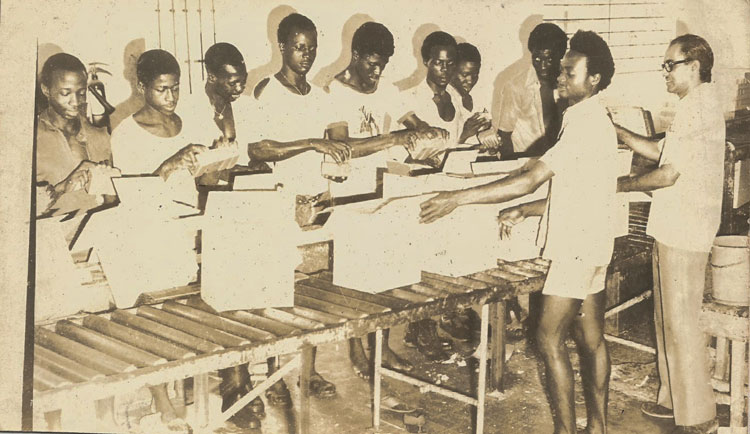
John in the Packaging Department of the Factory, Freetown, Sierra Leone | The Archive Project, Courtesy - Saviya Lopes.
The artist used her initiative to keep going: she accepted dress orders, sewing clothes for children. She secured a commission to make an artwork for a human rights network, and recently accepted a job making animatics for television advertisements.
Lopes is sanguine about how she has survived the pandemic. She discovered a silver lining in a grey cloud when she returned home to spend time with her grandmother in Vasai, near the suburbs of Mumbai, where you can explore the ruins of Portuguese forts. There, she researched her family roots and documented the journey of her grandfather, who worked in Africa. Lopes says the pandemic has brought her family closer together. Finally, she considers lessons that she has learned through this stormy time. “Nature, it’s bigger than anything else, humanity,” she says. “I think I really learned that we are tiny in this whole world.” She suggests she has arrived at the realisation that there is something “that as a human you can never control, no matter how advanced you are in science and technology. There is a saying in my language,” she says: “We are born out of dust and we will be dust.”
• The Crown Letter is presented by Photo Days, curated by Emmanuelle de l’Ecotais, and hosted by the Hyper Festival, organised by the City of Paris. An exhibition is taking place at Square de la Tour Saint-Jacques, Paris, until 22 August 2021. A show is also being staged at Jardin Villemin, Paris, until 31 August 2021.
• The Crown Letter is selected for the Bienalsur 2021, the International Biennial of Contemporary Art of the South.
• Natacha Nisic has been awarded the Hans and Lea Grundig Prize 2021, for The Crown Letter, and will receive her prize in Frankfurt, Germany, in December.